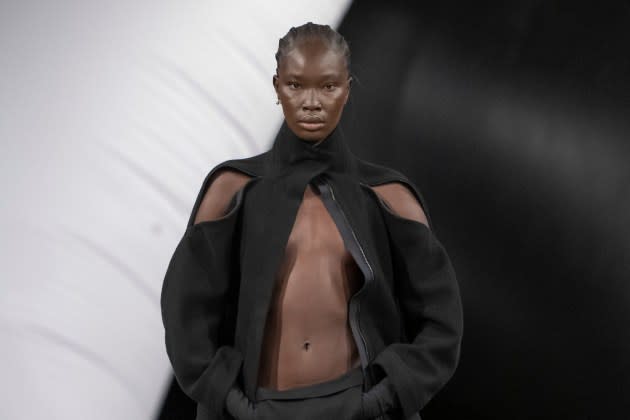Unlock the Tricks of Classic Eastern Wear
Discovering the enigmatic world of ageless Eastern wear explores a realm where creativity, culture, and history assemble to create garments that transcend mere textile and thread. The intricate tapestry of tradition intertwined with modern elements offers a glimpse into a world where every stitch informs a story, every concept a sign of value. Introducing the tricks behind these developments reveals a tapestry of heritage waiting to be unraveled, welcoming one to trip via the spiritual charm and aura of Eastern fashion.
Background of Eastern Fashion
The background of Eastern style dates back centuries, mirroring the rich cultural heritage and customs of diverse regions throughout Asia. Each region boasts its special designs, textiles, and styles that have been affected by aspects like climate, religious beliefs, social status, and trade courses. eastern wear pakistan. The elaborate silk garments of China signify style and sophistication, while the vivid saris of India showcase a kaleidoscope of patterns and colors.
In Japan, the robe has actually been an icon of custom and improvement for generations, with various styles used for numerous occasions. The hanbok in Korea represents the country's deep-rooted customizeds and is still used throughout important ceremonies. The history of Eastern fashion is a tapestry of advancement and practice, mixing old experiment modern influences to develop a vibrant and ever-evolving market. Comprehending the beginnings of these iconic garments gives understanding into the cultural value and workmanship that remain to inspire modern designers worldwide.
Importance of Standard Attire
Traditional outfit acts as a social emblem, symbolizing the values, ideas, and heritage of areas in Eastern cultures. eastern wear pakistan. These garments are not simply pieces of fabric yet are symbolic depictions of the rich background and traditions passed down via generations. In Eastern societies, typical attire plays a substantial function in ceremonies, celebrations, and every day life, showing the social condition, local affiliations, and also marriage status of individuals
The relevance of conventional clothing exceeds visual appeals; it is a means for individuals to get in touch with their origins and share satisfaction in their cultural identity. Each garment, from the detailed sarees of India to the moving hanboks of Korea, lugs with it a narrative of workmanship, meaning, and meaning that is deeply embedded in the textile of society.
Furthermore, traditional clothes functions as an aesthetic language, communicating tales of unity, strength, and triumph. By putting on these garments, individuals not only recognize their heritage yet also add to the conservation and celebration of their cultural legacy.
Development of Eastern Embroideries
Eastern embroideries have an abundant history that covers centuries and have continually developed to include diverse social impacts and respond to changing imaginative trends. The development of Eastern needleworks can be traced back to old worlds read review where detailed styles were hand-stitched onto materials utilizing standard methods.

Today, Eastern embroideries proceed to advance, mixing standard workmanship with contemporary style sensibilities to develop classic items that celebrate the beauty of multiculturalism and creative technology.
Luxurious Fabrics in Eastern Use
Glamorous textiles play a crucial role in raising the aesthetic appeal and quality of Eastern wear, enhancing the overall appeal and refinement of typical garments. Eastern wear is renowned for its opulent fabrics that not just show the area's rich social heritage yet additionally represent elegance and poise. Silk, a textile identified with deluxe, is frequently used in crafting Eastern outfit, presenting a glossy sheen and a soft, smooth appearance. The fine threads of silk not just drape beautifully but likewise add a touch of luxury to clothing.
In addition to silk, materials like velvet, chiffon, and brocade are likewise commonly included in Eastern wear. These glamorous fabrics not just boost the visual charm of Eastern wear however also guarantee a sense of refinement and elegance that goes beyond time.
Incorporating Eastern Style Today
In contemporary fashion landscapes, the combination of Eastern influences offers a harmonious combination of social heritage and modern-day appearances. Designers and style special info enthusiasts alike are accepting the rich tapestry of Eastern style, including conventional components into modern shapes and designs. From elaborate embroidery to luxurious materials and dynamic shades, Eastern fashion today provides a varied series of alternatives that accommodate a worldwide audience.
One method Eastern fashion is making its mark in modern closets is through the adjustment of typical garments such as the kimono, saree, or qipao into everyday wear. These items, when reserved for unique events, are currently reimagined in even more informal types, permitting their consolidation into everyday fashion selections. Furthermore, using traditional patterns and concepts in Western-style clothing includes a touch of unique his comment is here beauty to modern-day clothing.

Final Thought
Finally, checking out the abundant history, significance, and advancement of Eastern style reveals an ingrained link to heritage and worths. The glamorous materials and elaborate needleworks of Eastern wear showcase the versatility and eternity of typical layouts. Including Eastern influences in contemporary style enables for a combination of tradition and advancement, developing a harmonious balance in between the past and today.
Lavish fabrics play an essential function in elevating the visual appeal and high quality of Eastern wear, improving the total allure and class of traditional garments. Designers and style fanatics alike are embracing the abundant tapestry of Eastern style, integrating typical aspects into modern-day shapes and designs. From elaborate needlework to lively colors and elegant materials, Eastern fashion today supplies a varied range of choices that cater to an international audience.
One method Eastern style is making its mark in contemporary wardrobes is with the adjustment of traditional garments such as the robe, saree, or qipao right into everyday wear. The lavish fabrics and elaborate needleworks of Eastern wear showcase the flexibility and timelessness of standard styles.
Comments on “Exploring the Rich Heritage of Eastern Wear Pakistan in Modern Style”